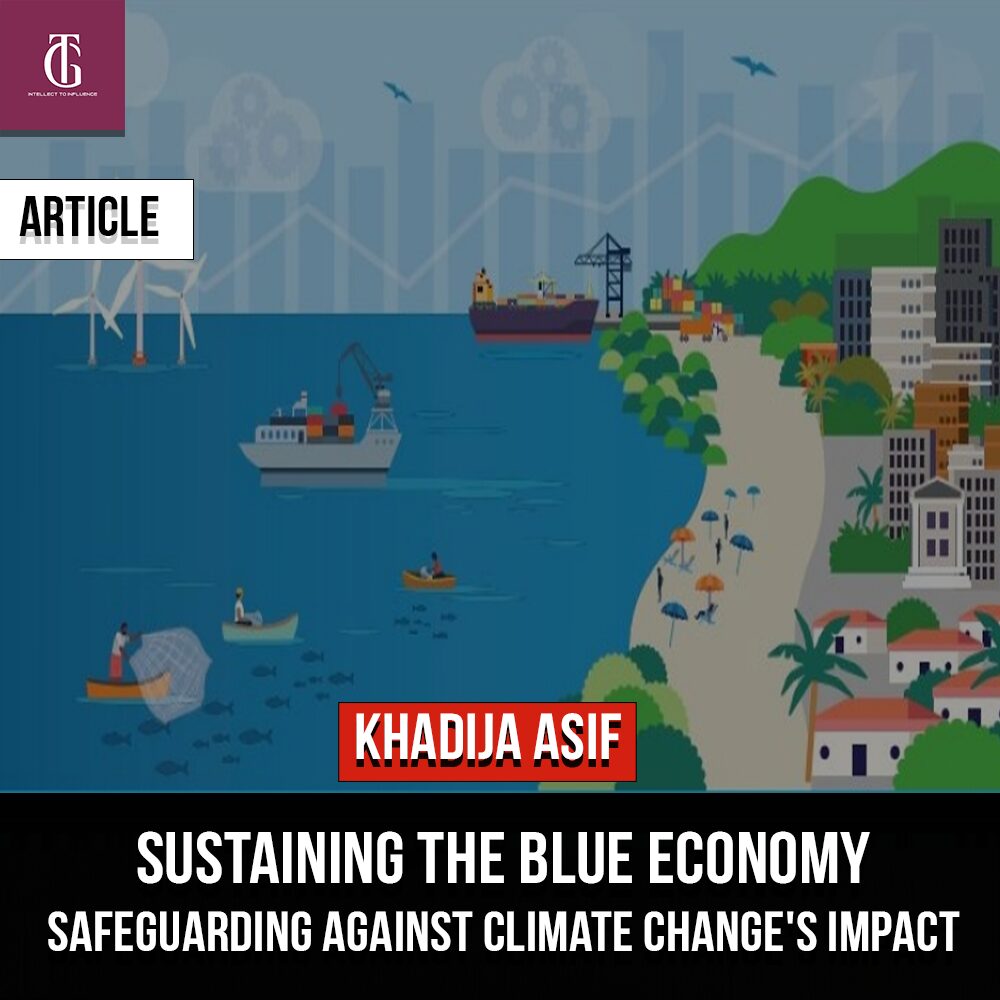In the realm of global economics, the “blue economy” stands as a beacon of promise, encapsulating the vast potential of sustainable ocean-based industries. Yet, amidst this promise lies a formidable challenge: the looming specter of climate change. As the Earth’s climate continues to evolve, the blue economy faces unprecedented threats that jeopardize its viability and resilience. To secure the future of this vital economic sector, proactive measures must be undertaken to protect against the adverse effects of climate change.
At its core, the blue economy encompasses a wide array of maritime activities, ranging from fisheries and aquaculture to tourism and renewable energy. These industries not only provide livelihoods for millions but also offer invaluable ecosystem services and resources. However, the interconnectedness between the health of the ocean and climate stability cannot be overstated. Rising sea levels, ocean acidification, and extreme weather events are just a few manifestations of climate change that pose existential threats to the blue economy.
One of the primary concerns is the impact of climate change on marine biodiversity and ecosystems. Coral reefs, often referred to as the “rainforests of the sea,” are under siege from warming waters and ocean acidification. These vital ecosystems not only support a quarter of all marine species but also provide coastal protection and sustenance for countless communities. As coral reefs decline, the ripple effects are felt throughout the entire blue economy, from diminished fish stocks to decreased tourism revenue.
Furthermore, the intensification of extreme weather events, such as hurricanes and typhoons, poses significant risks to coastal infrastructure and economies. Coastal communities, many of which rely heavily on fishing and tourism, are particularly vulnerable to the destructive power of these storms. The economic toll of rebuilding and recovery can be staggering, further exacerbating existing socio-economic disparities.
In the face of these challenges, proactive adaptation and mitigation strategies are imperative to safeguard the blue economy. Embracing sustainable practices that reduce greenhouse gas emissions and promote ecosystem resilience is paramount. Investments in renewable energy sources, such as offshore wind and wave energy, not only mitigate climate change but also diversify economic opportunities within the blue economy.
Moreover, enhancing marine conservation efforts and establishing marine protected areas (MPAs) can help preserve critical habitats and biodiversity hotspots. By safeguarding key ecosystems, such as coral reefs and mangroves, we not only bolster the resilience of the blue economy but also ensure the long-term sustainability of marine resources.
In addition to conservation measures, enhancing the resilience of coastal communities through climate-smart infrastructure and disaster preparedness is essential. This includes the implementation of nature-based solutions, such as restoring coastal wetlands and mangrove forests, which act as natural buffers against storm surges and erosion.
Furthermore, fostering international cooperation and collaboration is essential in addressing the transboundary nature of climate change and its impacts on the blue economy. By sharing knowledge, technology, and resources, nations can collectively tackle the challenges posed by climate change and chart a course towards a more sustainable future.
In conclusion, the blue economy stands at a critical juncture, poised between promise and peril. While the impacts of climate change pose formidable challenges, they also present opportunities for innovation and adaptation. By embracing sustainable practices, enhancing conservation efforts, and fostering international cooperation, we can protect and nurture the blue economy for generations to come. The time to act is now, for the health of our oceans is inextricably linked to the prosperity of our planet.
References:
1. United Nations. (2017). The Ocean Conference: Our oceans, our future: partnering for the implementation of Sustainable Development Goal 14. United Nations Publications.
2. Halpern, B. S., et al. (2015). Spatial and temporal changes in cumulative human impacts on the world’s ocean. Nature Communications, 6, 7615.
3. Hoegh-Guldberg, O., et al. (2017). Reviving the Ocean Economy: The Case for Action—2015. WWF International.
4. United Nations Development Programme. (2020). Protecting Blue Economy: Sustainable Financing for Marine and Coastal Resources Management. United Nations Development Programme.

Khadija Asif
Khadija Asif is a Mphil student in International Relations at Punjab University, Lahore. Her areas of interest are non-traditional security threats, Artificial Intelligence, International Affairs and power dynamics. She can reached via deejukhan2504@gmail.com






